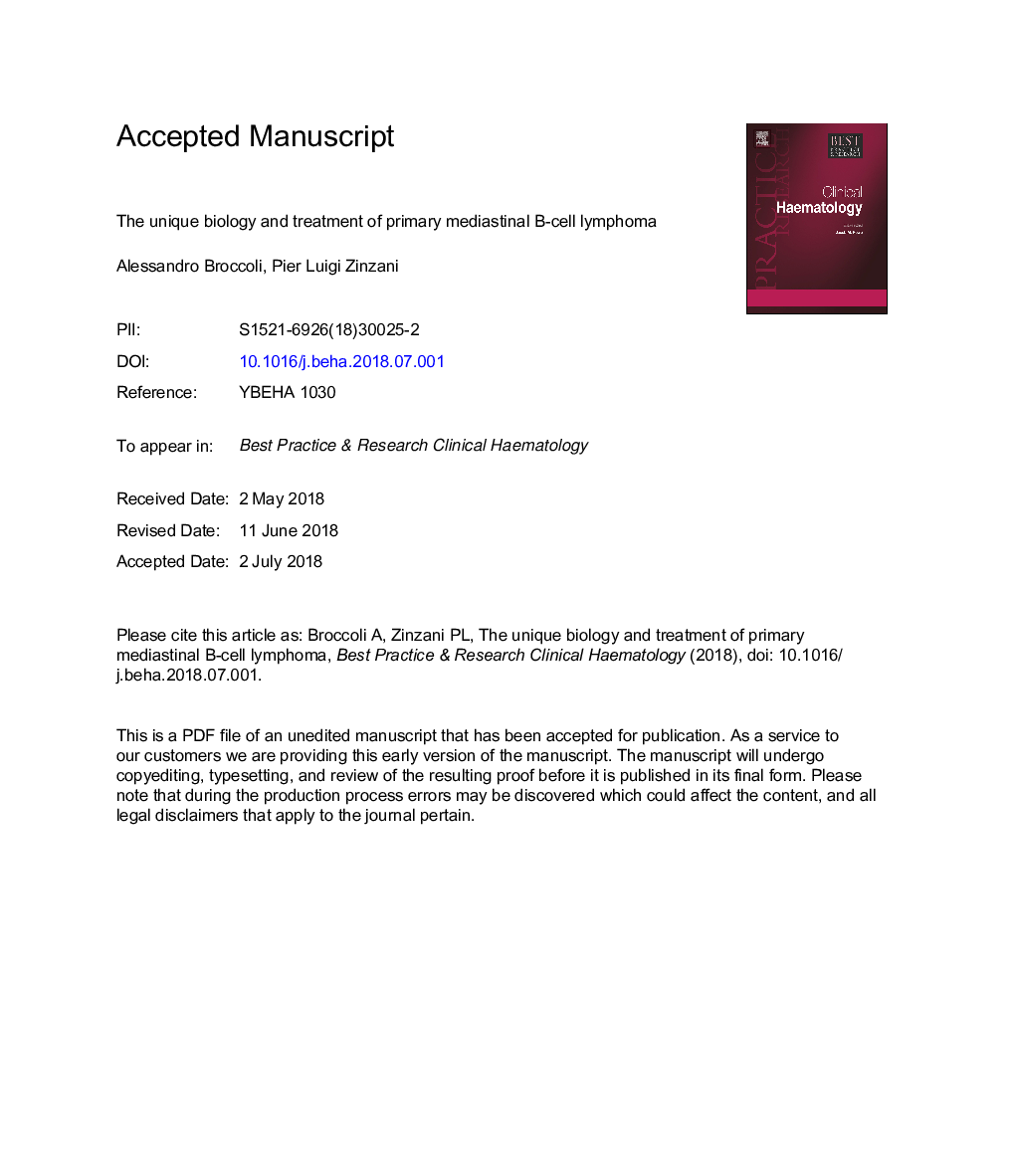| Article ID | Journal | Published Year | Pages | File Type |
|---|---|---|---|---|
| 10157427 | Best Practice & Research Clinical Haematology | 2018 | 42 Pages |
Abstract
The unique biological features of primary mediastinal large B-cell lymphoma are offering suggestions for the development and application of innovative drugs in patients who do not respond to first-line regimens or relapse. This lymphoma, in fact, is characterised by high rates of curability with standard anthracycline-containing chemoimmunotherapy regimens, but still displays a severe prognosis if adequate responses are not rapidly achieved or if the disease recurs. Radiotherapy has proved to be effective to consolidate responses after induction, but it may be safely avoided in certain cases, especially when a metabolic complete response is obtained, as to reduce the incidence of radiation-induced long-term sequelae. The current management of this lymphoma, both at diagnosis and at relapse, is reviewed in this paper, along with the description of its peculiar biological panorama.
Keywords
Related Topics
Life Sciences
Biochemistry, Genetics and Molecular Biology
Cancer Research
Authors
Alessandro Broccoli, Pier Luigi Zinzani,
